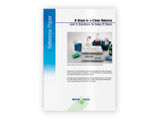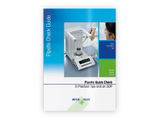To use all functions of this page, please activate cookies in your browser.
my.bionity.com
With an accout for my.bionity.com you can always see everything at a glance – and you can configure your own website and individual newsletter.
- My watch list
- My saved searches
- My saved topics
- My newsletter
Aromatase inhibitorAromatase inhibitors (AI) are a class of drugs used in the treatment of breast cancer and ovarian cancer in postmenopausal women that block the aromatase enzyme. Additional recommended knowledge
Type I and IIAIs are categorized into two types: [1]
Mode of actionAromatase inhibitors work by inhibiting the action of the enzyme aromatase, which converts androgens into estrogens by a process called aromatization. As breast tissue is stimulated by estrogens, decreasing their production is a way of suppressing recurrence of the breast tumor tissue. IndicationCancerIn contrast to pre-menopausal women, in whom most of the estrogen is produced in the ovaries, in post-menopausal women most of the body's estrogen is produced in the adrenal gland from the conversion of androgens. The other main source of estrogen post-menopausally is adipose tissue[citation needed]. Because some breast cancers respond to estrogen, lowering the estrogen level in post-menopausal women using aromatase inhibitors has been proven to be effective in breast cancer treatment.[2] Aromatase inhibitors are generally not used to treat breast cancer in premenopausal women. Since most of the circulating estrogen is produced by the ovaries, not by conversion of androgens to estrogen, blocking the enzyme aromatase does not significantly decrease the production of estrogen. When aromatase inhibitors are used in premenopausal women, the decrease in estrogen activates the hypothalamus and pituitary axis to increase gonadotropin secretion, which in turn stimulates the ovary to increase androgen production. This counteracts the effect of the aromatase inhibitor. An ongoing area of clinical research is optimizing adjuvant hormonal therapy in postmenopausal women with breast cancer. Tamoxifen has been standard treatment, however the ATAC trial has shown that clinical results are superior with an AI in postmenopausal women with localized breast cancer that is estrogen receptor positive. Further studies of various AIs are ongoing. OtherInvestigations are ongoing to look for other applications. Researchers are studying aromatase inhibitors to stimulate ovulation (in a manner similar to, but not exactly the same as, clomiphene citrate) or suppress estrogen production, ie in endometriosis.[3] AIs have also been used experimentally in the treatment of adolescents whose predicted adult height is low.[4] Bodybuilders who take anabolic steroids may also take AIs to prevent the steroids from being converted to estrogen; an increase in estrogen levels has undesirable consequences for a bodybuilder, such as gynecomastia. This is often the case when a natural aromatase inhibitor 4-OHAD [1] has itself been inhibited. 4-OHAD is a metabolite of testosterone, which can mean it remains inhibited whilst aromatase levels are allowed high. In one recent study, aromatase inhibitors were found to be no more successful at treating pubertal gynecomastia than a placebo. [5] Aromatase inhibitors have also been shown to reverse age-related declines in testosterone, as well as primary hypogonadism.[6] MembersSome of the aromatase inhibitors in use include:
References
|
|||||||||||||||||||
| This article is licensed under the GNU Free Documentation License. It uses material from the Wikipedia article "Aromatase_inhibitor". A list of authors is available in Wikipedia. | |||||||||||||||||||







